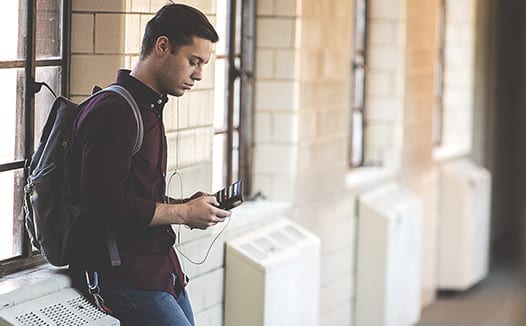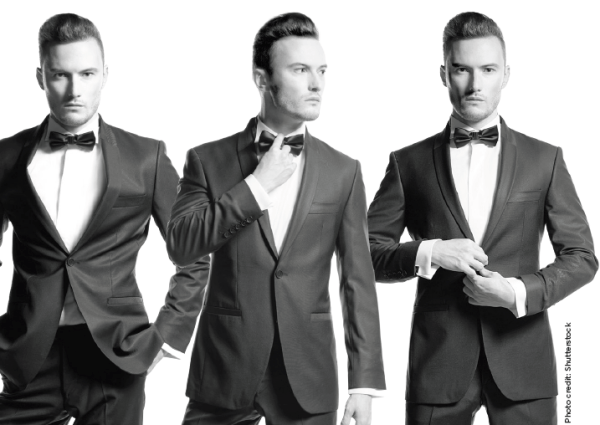
Blacksmith and artist Leslie Tharp adds modern metalworking techniques to historic trade.
By Caitlyn Finnegan
Photos by Dale Gunnoe
In a historically male-dominated industry, Leslie Tharp’s career is anything but typical.
The local artist welds blacksmithing with modern experimental metal techniques to create custom ironwork and public art installments that have been featured in museums, parks and “green space” exhibits across the country. When she’s not forging molten hot metal in her new workshop, Tharp enjoys using her experience to promote the craft to a new generation of artists. She recently sat down with The Business Report to discuss her growing business, the interactive nature of metalworking and her dream of seeing her sculptures in cities across the country.

How did you learn blacksmithing techniques?
I got my degree in fine arts from the University of Florida, and one of the required courses was in metalworking. It mostly focused on new techniques, but there was a small introduction to blacksmithing as well. I loved it, but wasn’t sure if I was strong enough to do it. I went up to the Penland School of Craft in North Carolina one summer and was able to take a specific course in blacksmithing with a professional blacksmith who taught us all kinds of tricks to easily work with different metals and how to develop the strength to handle the materials. I realized that if you heat up the metal enough, you can work with it like clay, and little by little I picked up the skills and equipment to be able to work with it full time.
What draws you to use metal?
It’s so immediate and strong. For something so permanent, it’s wild to me that when you heat the metal it becomes so fluid and easy to mold, but just a few seconds later it becomes something that is going to last forever. That’s what keeps me hooked and coming back to it day after day.
What’s it like working with such heavy materials?
A recurring challenge is that I like to build things as big as I can physically handle them; my boyfriend thinks I should invest in a crane. With the gigantic cycle piece I designed for the UF Vet School, we were faced with fitting it through a single door. We ended up corkscrewing it through and being able to install it without too much trouble, but it was a scary moment when we thought it wouldn’t fit.
Lately I’ve been spending a lot of time applying for public art grants. Once I apply, I meet with the committee for the location, figure out what their needs are and scope out the area for any inspiration. I like to incorporate the natural environment surrounding the location into the design and make it very tactile and engaging for the people going by it every day. I’m also teaming up with my dad to form Tharp Design Team so we can apply for even bigger grants and projects. He’s a general contractor, so he’ll bring a lot of knowledge and expertise to help in the construction of larger projects.
Any current projects you’re excited about?
I’ve been applying for a lot of temporary exhibitions across the country. Right now, I have a piece up in Atlanta on the Atlanta Beltline, an abandoned railroad line along the outside of the city. The surrounding community cleaned up the area, put in a sidewalk and are helping to make it a green area. People can use the line to get to work faster than they could taking a car, and they’ve set up sculptures along the way to help beautify it. I have another piece that will be going up in Scottsdale, Arizona, later this year as well. The temporary exhibits give me more room to play with new techniques and experiment, since they aren’t a permanent part of the landscape.
How does public art compare to private clients?
I like the accessibility of it. I want it to be a welcome surprise and really enrich the space it’s in, so that people can congregate around it and bring their kids to see and interact with the piece.
Tell us about your blacksmithing workshops.
I’m offering workshops twice a week in my shop off Highway 441. The workshops take place in the evenings to combat the heat of the forge, and are open to two people at a time. I teach them basic techniques and help them build household items and pieces they can use every day. I also just started offering an internship position this month. The idea is to eventually bring in students so they can work with a full-time artist and learn what it takes to run an art business.
What’s your philosophy on art?
I think art should be accessible for everyone. That’s what has driven me to work primarily with public art; I like when people stumble across a piece of art when they don’t expect it. I don’t think pieces should be stuck in a gallery and only viewable to a certain audience. I also want it to be attainable for anyone to own art as well, so I try to keep my prices down on my household pieces. The environmental interaction resonates a lot for me too. I hike and canoe as much as possible, so I try to bring those interactions into my pieces.
What is it like working in the art community?
Supporting yourself through art can be a challenge; the hours are quick to add up and your business is constantly on your mind. At the same time, it’s so rewarding, because I’m learning so much each month and I get to try different things all the time. Through ArtLab, we’ve helped a great community of artists that come together and share what they’ve learned about working in the business.
What is ArtLab?
It’s a community for different artists to come together, share ideas and provide business advice to those just starting out. The idea for the group stemmed from when I graduated and found that I wasn’t really prepared to run a business. So, each month we all come together and focus on sharing advice we think will help each other. The smallest things can help out a ton, and it’s been wildly successful.
Learn more about Leslie and how you can purchase her art at www.leslietharp.com.
To learn more about ArtLab, visit GainesvilleArtLab.org.





